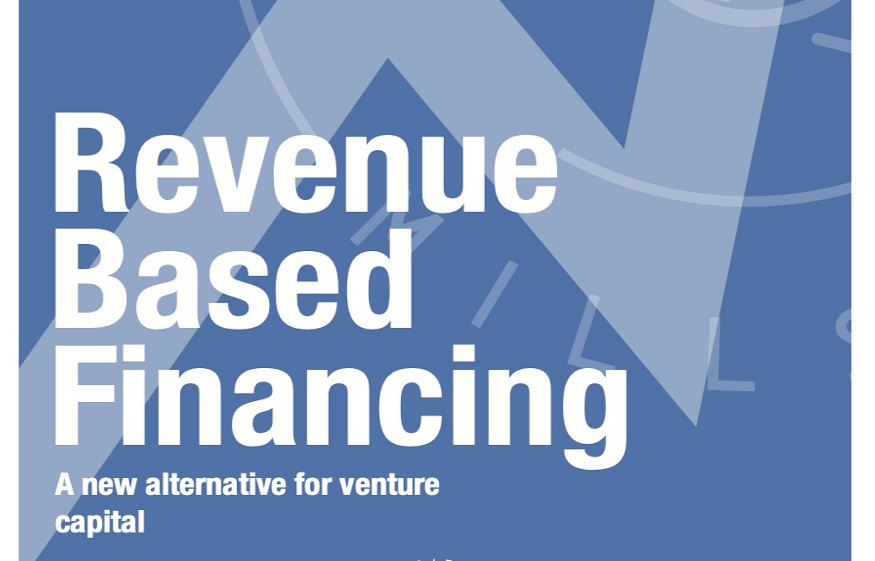
Are you looking to take your business to the next level but struggling to secure traditional financing? Look no further than revenue based funding. This innovative and flexible funding option is revolutionising the way businesses grow and succeed. In this blog post, we’ll explore how revenue based funding can propel your business forward by maximising growth opportunities like never before. Let’s dive in and discover how this game-changing strategy can help you achieve your business goals faster than you ever thought possible.
Introduction to Revenue Based Funding (RBF)
As a business owner, securing funding for your company’s growth can be a daunting task. Traditional methods of fundraising, such as taking out loans or seeking investments, often come with high interest rates and the potential loss of control over your business. However, there is an alternative option that has gained popularity in recent years – Revenue Based Funding (RBF).
RBF is a financing model where investors provide capital to a company in exchange for a percentage of its future revenues until the invested amount, along with an agreed-upon return, is repaid. This type of funding offers several benefits for businesses looking to grow without sacrificing equity or taking on high-interest debt.
One major advantage of RBF is that it offers more flexibility compared to traditional funding options. Since payments are based on a percentage of revenue rather than fixed monthly amounts, businesses have more leeway during slower months and can repay more when sales are higher. This allows for smoother cash flow management and reduces the risk of defaulting on loan payments.
Another benefit is that RBF does not require collateral or personal guarantees from the business owners. This means that they do not have to put their own assets at risk to secure financing, which can be stressful and risky in case of financial difficulties.
Moreover, RBF investors often take a hands-off approach when it comes to managing the business. Unlike traditional lenders who may impose strict conditions on how funds are used, RBF investors typically do not interfere with day-to-day operations or decision-making processes. This gives entrepreneurs more freedom and autonomy in running their business while still receiving crucial funding.
Additionally, RBF can be obtained relatively quickly compared to other funding options. The application process is simpler and less time-consuming since there is no need for extensive documentation or lengthy approval processes like those required by banks or venture capitalists.
Revenue Based Funding offers an attractive alternative financing option for businesses seeking to grow without sacrificing equity or incurring high-interest debt. Its flexibility, lack of collateral requirements, hands-off approach from investors, and quicker access to funds make it an appealing choice for entrepreneurs looking to propel their business forward. In the following sections, we will delve deeper into how RBF works and explore its potential impact on your business’s growth.
Understanding the Basics of RBF
RBF, or Revenue Based Funding, is a relatively new financing model that has gained popularity among startups and small businesses. It offers an alternative to traditional equity funding by providing a way for businesses to access capital without giving up ownership or control of their company.
At its core, RBF works by providing businesses with upfront capital in exchange for a percentage of their future revenues. This means that instead of paying back a fixed loan amount with interest, the business will pay back a predetermined percentage of their monthly revenue until the agreed upon amount has been repaid.
One of the key benefits of RBF is that it aligns the interests of both the investor and the entrepreneur. Unlike traditional loans where repayment is solely based on time and interest rates, RBF investors are invested in the success and growth of the business. As such, they have a vested interest in helping the business succeed as their returns are directly tied to its performance.
Another advantage of RBF is its flexibility. The terms can be tailored to fit each individual business’s needs and growth projections. For example, if a business experiences slower than expected growth, they may pay back less than originally anticipated. On the other hand, if a business grows faster than expected, they may end up repaying more quickly.
It’s also worth noting that RBF does not require personal guarantees from entrepreneurs or any collateral for securing funding. This makes it an attractive option for young companies who may not have significant assets to offer as collateral.
However, like any form of financing, there are also some drawbacks to consider when opting for RBF. One major concern is that because repayment is based on revenue rather than profit margins or cash flow levels, high-growth but low-margin businesses may find themselves paying higher percentages than traditional loan options.
Additionally, since RBF investors take on more risk compared to traditional lenders, their return expectations tend to be greater. This could result in higher overall costs for the business in the long run.
Understanding the basics of RBF is crucial for businesses considering this form of funding. While it offers many benefits such as flexibility and aligned interests, it’s important to carefully assess its potential impact on your business’s growth and financials before making a decision. Consulting with a financial advisor or experienced RBF investor can also provide valuable insights and guidance in determining if this financing model is right for your business.
The Role of RBF in Business Growth
Revenue Based Funding (RBF) has gained popularity in recent years as a form of financing for businesses. This alternative funding method offers many benefits and plays a crucial role in the growth and success of businesses.
One of the main roles of RBF in business growth is providing access to capital without sacrificing ownership or control. Traditional forms of funding, such as venture capital or bank loans, often require equity or collateral, making it difficult for small businesses to secure funding. RBF, on the other hand, provides flexible financing options without diluting ownership or putting assets at risk. This allows businesses to maintain their independence and continue making decisions that align with their vision and goals.
Moreover, RBF allows businesses to access larger amounts of funding compared to traditional methods. This is because RBF investors base their lending decisions on a company’s future revenue projections rather than its current financial status. As a result, growing companies with high potential can secure more significant investments through RBF than they would through traditional loans.
Another crucial role played by RBF in business growth is its revenue-sharing model. Unlike traditional loans that require fixed monthly payments regardless of the company’s performance, RBF repayment terms are directly tied to revenue generation. This means that during periods of lower sales, there is less pressure on the business to make repayments. On the other hand, when sales increase, so does the repayment amount – ensuring alignment between investor and borrower interests.
In addition to these benefits, RBF also promotes sustainable growth for businesses by eliminating debt burdens. Unlike traditional loans that come with strict repayment schedules and interest rates, RBF offers more flexibility in terms of payment structure and timelines. This reduces financial stress on businesses and allows them to focus on investing in growth opportunities instead of managing debt repayments.
Moreover, RBF can also provide valuable mentorship and resources for business owners beyond just financial support. Many investors who provide RBF have extensive experience in building and scaling businesses, making them valuable mentors for entrepreneurs. They can offer advice, connections, and guidance that can help businesses grow even further.
RBF plays a crucial role in the growth of businesses by providing access to capital without diluting ownership or control, offering flexible financing options, promoting sustainable growth, and providing mentorship opportunities. As more companies turn to alternative forms of financing to support their growth plans, RBF has proven to be an effective and beneficial option for many businesses looking to reach their full potential.
How to Determine if RBF is right for your business
Revenue Based Funding (RBF) is a financing option that has gained popularity among small and medium-sized businesses in recent years. Unlike traditional loans, RBF provides funding in exchange for a percentage of monthly revenue until the agreed amount is repaid. This alternative method of financing offers flexibility and potential for growth, making it an attractive option for many businesses. However, before deciding if RBF is right for your business, it’s important to carefully consider its advantages and disadvantages.
The first step in determining if RBF is suitable for your business is to assess your current financial situation. This includes evaluating your revenue streams, expenses, and overall financial health. Since RBF requires a portion of your monthly revenue as repayment, it’s crucial to have consistent cash flow to meet these obligations without impacting day-to-day operations. Therefore, if your business has inconsistent or seasonal revenue patterns, you may need to consider other financing options.
Next, you should evaluate the growth potential of your business. One of the main benefits of RBF is its ability to provide immediate access to capital while also allowing businesses to maintain ownership and control over their operations. This makes it particularly appealing for companies with high-growth potential that are seeking funds to expand or scale their operations. If you have a strong growth strategy in place and are confident about the future prospects of your business, then RBF could be a viable option.
Another factor to consider when assessing whether RBF is right for your business is the cost associated with this type of financing. While traditional loans typically come with fixed interest rates, RBF involves sharing a portion of future revenues with investors who take on more risk than traditional lenders. As such, the cost of RBF can be higher than conventional loans in terms of percentage points or total repayment amount over time.
Additionally, it’s essential to understand the terms and conditions associated with an RBF agreement thoroughly before signing any contract. The repayment structure can vary, and it’s crucial to negotiate terms that align with your business goals and objectives. Some RBF agreements may also include equity or other forms of ownership in the business, which can have long-term implications for your company.
While RBF can offer significant advantages for businesses seeking alternative financing options, it’s not suitable for every situation. Before deciding if RBF is right for your business, carefully assess your financial situation, growth potential, and the associated costs and terms. With proper evaluation and consideration of all factors involved, you can determine if RBF is the best fit for your business needs.
Conclusion
As we have explored, revenue-based funding can be a valuable tool for businesses looking to grow and expand. By providing access to capital without the pressure of traditional loans, it allows companies to focus on their growth strategies and achieve their goals. Whether you are a startup or an established business, consider the potential benefits of revenue-based funding in propelling your business forward towards success and profitability. With careful planning and strategic use, this alternative form of financing can be just what your company needs to reach new heights.

 How Loan Calculators Help Borrowers Plan EMIs With Greater Accuracy
How Loan Calculators Help Borrowers Plan EMIs With Greater Accuracy  Navigating Financial Challenges: The Advantages of Allen, Texas Payday Loans
Navigating Financial Challenges: The Advantages of Allen, Texas Payday Loans  A New Way to Finance Your Business Growth with a Revenue Based Loan Agreement
A New Way to Finance Your Business Growth with a Revenue Based Loan Agreement  Why commercial business loans are a smart investment for expanding your enterprise
Why commercial business loans are a smart investment for expanding your enterprise  Exploring the Platform of Online Emergency Loan in Time
Exploring the Platform of Online Emergency Loan in Time  What are the steps and the required documents to apply for a mortgage?
What are the steps and the required documents to apply for a mortgage?  Options Greeks in Action: Structuring Multi-Leg Trades for Italian Equities and Indices
Options Greeks in Action: Structuring Multi-Leg Trades for Italian Equities and Indices  Common Mistakes to Avoid When Working with a B2B Marketing Agency
Common Mistakes to Avoid When Working with a B2B Marketing Agency  Everything You Need to Know About Floor Cleaning in Oregon & Southwest Washington
Everything You Need to Know About Floor Cleaning in Oregon & Southwest Washington